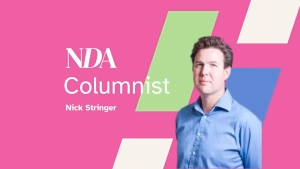By Suzana Lay, Planning Director, The Grove Media
Over the past few months, there has been heightened industry focus on attention and attention metrics. The IAB believes there are three key drivers for this: marketers and CFOs needing to be more analytical when assessing the impact of marketing investments, the proliferation of ad formats making performance comparisons harder, and the development of new or improved ways of measuring attention.
This increased focus on attention is very positive and is in line with a growing move to contextual targeting. Attention metrics make up for the discrepancies in how reach and frequency are calculated across channels. And measuring attention also compensates for the shortcomings of viewability as a measurement. But more fundamentally than that, attention indicates whether people are genuinely engaging with advertising, rather than just being counted as numbers.
From our work with advertisers at The Grove, it’s clear that measuring attention in advertising opens up several real-world media opportunities for advertisers. Linking campaigns to business outcomes, unlocking the full potential of creative, optimising for channels, reducing waste, and driving sustainability are just some of the key benefits.
A lot of the trade media focus on attention has been on the new methods of measuring attention, the main one being eye tracking technology. This approach can be used to report on campaign performance or to provide data for predictive planning. But for advertisers that don’t have the budget for expensive tech and want to understand how their advertising is performing – above and beyond CPM analysis – you can apply smart, practical attention metrics.
Attention measurement company Lumen has developed metrics that enables rating each media type using the common currency of ‘attentive seconds’. According to Lumen, only 8% of your MPUs (banner ads) are likely to have been looked at. And, on average, these ads are likely to have received 1.3 seconds of attention each. With this information, Lumen has created a composite metric that takes into account how likely people are to look at your ads, and how long they look at them. So, 1000 ads x 8% chance of being seen x 1.3 seconds of attention = 110 ‘attentive seconds’.
Using Lumen’s attention averages, we can show how a CPM analysis across traditional and digital platforms can give a misleading impression of how advertising is performing. Calculations for a cost/000 attentive seconds using clients’ own CPM data and the Lumen and TVision research averages can be directly compared to traditional CPMs
If we look solely at generic CPMs in the example below: Instagram, followed by YouTube, would appear to be the most efficient channels:
| Channel | Avg. CPM |
| TV | £10.80 |
| Cinema | £70.00 |
| Magazine | £55.00 |
| DOOH | £38.00 |
| £5.75 | |
| YouTube | £7.70 |
| Door Drops | £59.00 |
For many advertisers who are scrutinising budgets, this can often lead to shifting budgets from (traditionally) offline channels into digital, regardless of their objective. And for advertisers where awareness and brand-building is a focus, the CPM metric becomes a proxy for efficiency of reach.
However, when you build in attention, and consider the cost/000 attentive seconds, the picture changes dramatically, as you can see below:
| Channel | Avg. CPT | Cost/000 attentive seconds |
| TV | £10.80 | £1.68 |
| Cinema | £70.00 | £1.25 |
| Magazine | £40.00 | £24.84 |
| OOH | £10.00 | £11.93 |
| £5.75 | £8.13 | |
| YouTube | £7.70 | £2.28 |
| Door Drops | £59.00 | £1.30 |
Due to the longer dwell times and higher chances of being viewed of the likes of door-drops, cinema and TV, versus social media, they now become much more efficient in terms of cost. For some channels and formats, there will be a need to use proxies due to the lack of researched benchmarks, but this is a significant departure from assessing channels purely on a CPM basis.
And there other practical ways you can use attention metrics. It can be the guideline for the timing of brand and key message within creative. For example, for a 30” TV ad, the average viewing time is 8.7 seconds, brands therefore have an average of 8.7 seconds to land the message or hook in the viewer.
You can improve sequential ad/ frequency planning by identifying the channels that command shorter attention levels. You can maximise copy length efficiencies using the Lumen average time bar chart. For example, 39% of a 30” TV ad is viewed, with an 11.8s average viewing time vs. 44% of a 20” TV ad, with an 8.7s average viewing time. However, due to the relative cost of a 20” ad (85% of a 30”), the overall cost per second of attention for a 20” ad ends up being 15% more expensive than a 30”.
Using Lumen metrics to optimise media according to attention levels is something that all advertisers can do now. And, importantly, planning through the filter of attention shifts the focus to quality of environment, format and messaging which helps improve the impact of advertising. With budgets under pressure, and as we move into another year of harsh economic conditions, we would urge all advertisers to embrace attention metrics in their planning to get the most out of their media investments.










